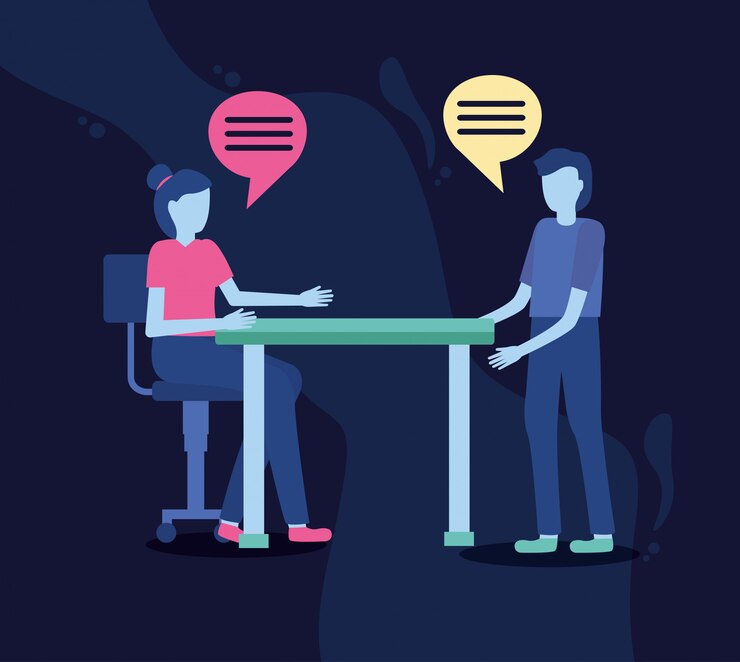Table of Contents
ToggleThe workplace is a melting pot of Different Mentalities, backgrounds, and ways of thinking. Employees come from diverse cultures, have unique experiences, and possess varied problem-solving approaches. While this diversity can drive innovation and creativity, it can also lead to misunderstandings, conflicts, and communication barriers.
To create a harmonious and productive work environment, it’s crucial to understand how to interact with and manage different mentalities. This guide will explore the different types of workplace mentalities, the challenges they present, and strategies to effectively work with them.
Understanding Different Work Mentalities
Each individual in a workplace has a distinct mentality, shaped by upbringing, education, work experiences, and personality traits. Here are some of the most common work mentalities:
1. The Analytical Thinker
- Logical, detail-oriented, and prefers data-driven decision-making.
- Enjoys working with numbers, charts, and structured frameworks.
- Can be rigid and overly focused on facts, sometimes missing the human element.
How to work with them:
- Present clear data and evidence when discussing projects.
- Avoid emotional appeals; instead, focus on facts and logic.
- Allow them time to analyze and process information before making decisions.
2. The Creative Innovator
- Loves brainstorming new ideas and thinking outside the box.
- Thrives in environments that allow experimentation and flexibility.
- May struggle with deadlines and structured processes.
How to work with them:
- Encourage their creativity but set boundaries to ensure productivity.
- Provide a flexible work environment that fosters innovation.
- Pair them with structured team members to balance creativity with execution.
3. The Task-Oriented Worker
- Focused on getting things done efficiently and meeting deadlines.
- Prefers clear instructions and well-defined roles.
- May struggle with ambiguity or workplace distractions.
How to work with them:
- Be clear and direct in assigning tasks and expectations.
- Minimize unnecessary meetings or interruptions.
- Recognize their efficiency and reward task completion.
4. The Relationship-Driven Professional
- Values teamwork, collaboration, and emotional connections.
- Prioritizes workplace harmony and enjoys working with others.
- Can be sensitive to criticism and may avoid conflict.
How to work with them:
- Use a people-centric approach when discussing workplace challenges.
- Provide positive reinforcement and feedback in a constructive way.
- Encourage them to express their thoughts and ideas openly.
5. The Risk-Taker
- Embraces challenges and is willing to take bold decisions.
- Comfortable with uncertainty and enjoys solving complex problems.
- Can sometimes make impulsive decisions without fully considering consequences.
How to work with them:
- Provide guidelines to balance their risk-taking nature.
- Encourage them to calculate risks before making decisions.
- Acknowledge their willingness to take initiative.
6. The Cautious Worker
- Prefers stability and security over risk and uncertainty.
- Likes to follow set rules and established procedures.
- May resist change or be slow to adopt new technologies.
How to work with them:
- Offer reassurance and step-by-step guidance during changes.
- Allow them time to adapt and gradually introduce new ideas.
- Encourage them to step out of their comfort zone in a supportive manner.
Challenges of Dealing with Different Mentalities
Diversity in thought is a strength, but it also presents challenges such as:
1. Communication Barriers
- Some individuals prefer direct, factual communication, while others respond better to emotional or relationship-based discussions.
Solution: Adapt your communication style based on the person you are interacting with. Use clear, precise language and confirm understanding.
2. Conflict in Decision-Making
- Analytical thinkers may want more data, while risk-takers may want quick action.
- Relationship-driven workers may hesitate to make difficult decisions.
Solution: Find a balance by encouraging data-backed decisions while also considering intuition and team input.
3. Resistance to Change
- Some employees are excited about new ideas, while others prefer sticking to old routines.
Solution: Gradually introduce changes, providing clear benefits and guidance to those resistant to them.
4. Different Work Speeds
- Some employees work fast and take risks, while others prefer slow, steady progress.
Solution: Assign tasks that align with each person’s strengths while fostering collaboration between different working styles.
Strategies to Effectively Work with Different Mentalities
1. Improve Emotional Intelligence (EQ)
Developing emotional intelligence helps in understanding and managing workplace interactions. Key aspects include:
- Self-awareness – Understanding your own emotions and biases.
- Empathy – Considering colleagues’ perspectives.
- Self-regulation – Managing emotions to respond appropriately.
2. Adjust Communication Styles
- Use structured discussions with analytical thinkers.
- Engage in casual conversations with relationship-driven individuals.
- Provide clear deadlines for task-oriented workers.
3. Foster a Culture of Inclusivity
- Encourage diverse perspectives in meetings.
- Promote mutual respect regardless of work style.
- Offer flexibility to accommodate different working preferences.
4. Encourage Collaboration and Teamwork
- Create mixed teams that blend different strengths.
- Use brainstorming sessions to integrate different viewpoints.
- Promote open dialogue to address misunderstandings.
5. Set Clear Goals and Expectations
- Clearly define objectives and success metrics.
- Use structured plans for execution-focused workers.
- Allow flexibility for creative employees.
6. Provide Constructive Feedback
- Analytical workers prefer direct, data-driven feedback.
- Creative individuals appreciate encouragement and idea validation.
- Relationship-driven professionals respond well to positive reinforcement.
7. Mediate and Resolve Conflicts Professionally
- Address issues early before they escalate.
- Encourage open, solution-oriented discussions.
- Foster a culture where differences are respected.
Conclusion
A diverse workplace is both an opportunity and a challenge. By understanding different mentalities, fostering emotional intelligence, and adapting communication and leadership styles, professionals can turn workplace diversity into a strength.
By practicing patience, empathy, and adaptability, individuals can navigate workplace differences effectively, creating a more harmonious, productive, and innovative work environment.
